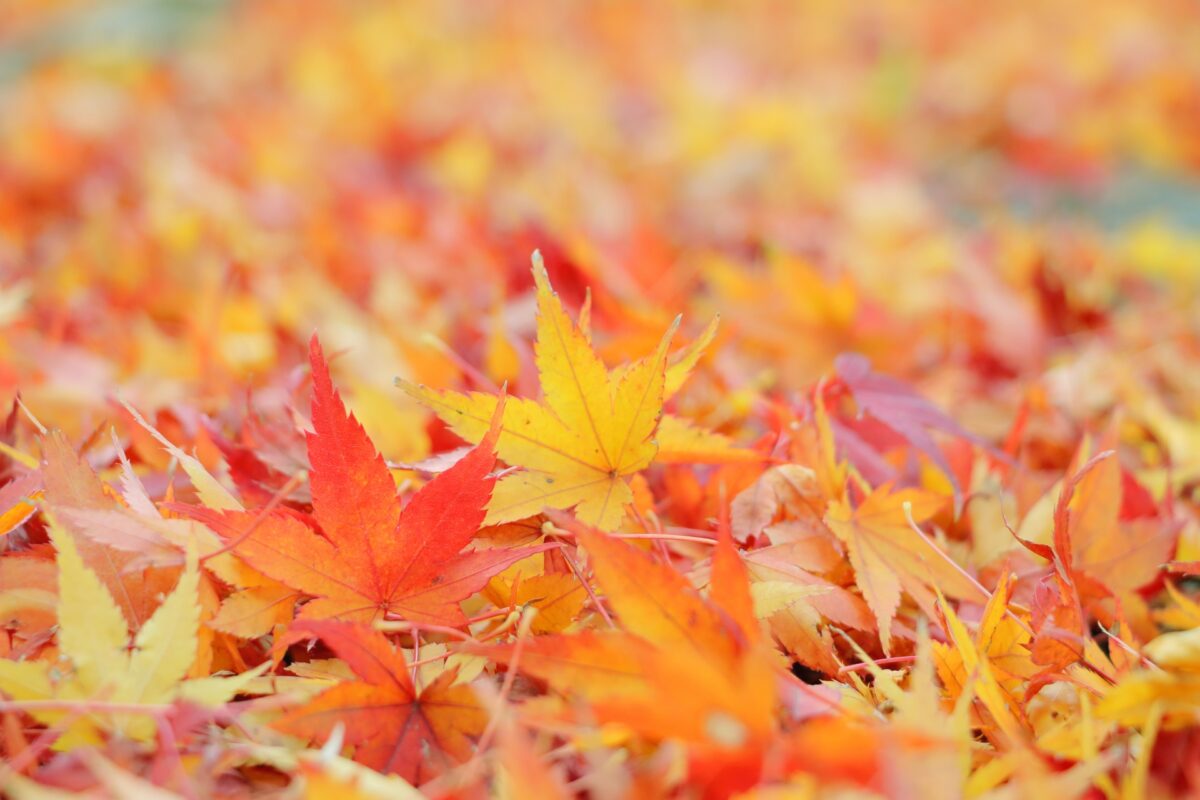Diving Deep into the Charm of Ritto (Start of Winter)! A Female Travel Writer Explains the History, Customs, and Regional Differences

『 This article is… 』
This page delves into how the season of Ritto (Start of Winter) varies across different regions in Japan. From the snowy landscapes of Hokkaido to the autumn leaves in Kyoto, and the warm climate of Okinawa, it introduces the unique characteristics of each area as ‘Kasumi Points’. Aimed at those interested in Japan’s seasons and regional culture, reading this provides an understanding of Japan’s rich natural beauty and diverse traditional culture, deepening the appreciation of the seasonal changes.
Hello, I’m Kasumi, a travel web writer who has journeyed across all 47 prefectures of Japan. I’ve been captivated by the beauty of Japan’s distinct seasons and its profound culture and history. In this feature, I aim to unravel the facets of ‘Ritto’, one of Japan’s twenty-four sekki, from its historical origins to contemporary customs and regional characteristics, all from a woman’s perspective. Ritto is more than just a part of the calendar; it’s a time deeply rooted in the lives and hearts of the Japanese, reflecting a sense of the seasons. I’ll share the meaning and allure of Ritto, making it easy to understand, while weaving in my travel experiences. Let’s feel the end of autumn in Japan together.
- The Origin and Historical Background of Ritto (Start of Winter)
- The Characteristics of Ritto and Regional Differences
- Contemporary Customs and Ways to Enjoy Ritto (Start of Winter)
- Ritto and Japanese Traditional Culture – In-depth Analysis
- The Charm and Importance of Japan’s Seasons as Felt through Ritto
- Summary and Reflections
- Kasumi’s Points
- Hokkaido (Kasumi’s Point: Beginning of Winter and Snowscapes)
- Kyoto Prefecture (Kasumi’s Point: Autumn Leaves and Historic Buildings)
- Okinawa Prefecture (Kasumi’s Point: Warm Climate and Traditional Events)
- Niigata Prefecture (Kasumi’s Point: Winter Delicacies and Hot Springs)
- Gifu Prefecture (Kasumi’s Point: Mountains and Hot Springs)
The Origin and Historical Background of Ritto (Start of Winter)
What is Ritto?
Ritto is one of Japan’s traditional twenty-four sekki, marking the end of autumn and the beginning of winter. Ritto day falls around November 7th each year. This day is considered the start of winter on the calendar, and it’s a crucial period for sensing changes in the natural world.
Historical Background
The concept of Ritto originates from ancient Chinese lunisolar calendars and was introduced to Japan in the Nara period. In Japan, the arrival of Ritto signals the beginning of preparations for winter. Traditionally, it was also an important time to mark the end of agricultural activities and to celebrate the start of a new season.
Customs of Ritto
Historically, Ritto has been associated with special customs. For example, there’s a tradition of eating a special porridge called “Ritto porridge,” signifying the arrival of winter. This practice was intended to adjust one’s physical condition to the changing seasons and to pray for good health. Additionally, the change from autumn to winter clothing around Ritto highlights the conscious adaptation to seasonal changes in daily life.
The Charm of Ritto from a Woman’s Perspective
In my travels, I’ve noticed that during Ritto, the autumn leaves across Japan are at their most beautiful, vividly representing the transition of nature. Particularly in ancient cities like Kyoto and Nara, the old temples and shrines adorned with autumn leaves beautifully demonstrate the harmony of history and nature. Visiting these places during Ritto allows one to experience the beauty of Japan’s seasons and the depth of its history, capturing the beauty with a woman’s delicate sensibility.
In the next section, I will provide a detailed introduction to the characteristics of Ritto and the differences seen in various regions.
The Characteristics of Ritto and Regional Differences
Characteristics of Ritto
Ritto signifies the onset of winter. During this period, temperatures across Japan start to drop significantly, signaling the start of serious winter preparations. Another notable feature of Ritto is the shortening of daylight hours as we approach the winter solstice. In the natural world, the end of the autumn leaves and the spread of barren winter landscapes herald the arrival of winter.
Regional Differences
Japan’s length from north to south leads to significant regional differences during Ritto.
Hokkaido
In Hokkaido, snow often starts to accumulate around Ritto, creating winter landscapes. Urban areas like Sapporo and Otaru begin their winter illuminations, enveloping the cities in a magical atmosphere.
Tohoku and Kanto in Honshu
In the Tohoku region, the first snowfall often coincides with Ritto, especially in the mountainous areas where the scenery swiftly changes from autumn foliage to winter vistas. In the Kanto region, the chill in the air intensifies, marking the time for winter preparations.
Western Japan and Kyushu
In Western Japan and Kyushu, the climate remains relatively mild even around Ritto, making it an excellent time to enjoy the beautiful autumn leaves. Kyoto and Nara, in particular, become bustling with tourists going on autumn leaf hunts.
Perspective of a Female Travel Writer
As a travel writer touring various parts of Japan, I find the charm of Ritto lies in how each region welcomes winter. The north showcases snowscapes, while the south still enjoys remnants of autumn. This contrast in landscapes symbolizes the diverse beauty of Japan’s nature. Capturing and expressing these subtle changes through a woman’s sensitivity is the essence of my writing.
In the next section, I will talk about modern customs related to Ritto and how to enjoy this season.
Contemporary Customs and Ways to Enjoy Ritto (Start of Winter)
Modern Customs of Ritto
Despite the evolution of time and fading of many traditional customs, rituals and practices associated with Ritto continue to be cherished by many.
Ritto Porridge
The tradition of eating “Ritto porridge,” which dates back centuries, is still observed in some regions and households today. Eating porridge made with new rice and seasonal vegetables is a way to internally welcome and feel the onset of winter.
Winter Preparations
After Ritto, many households switch to winter clothing. Preparations for winter, such as setting up kotatsu (heated tables) and checking heating appliances, are common practices in homes.
Contemporary Ways to Enjoy Ritto
The way people enjoy this season has diversified in modern times.
Enjoying Nature’s Changes
As the peak of autumn leaves ends and trees begin preparing for winter, it’s an ideal time to experience nature’s transition. Walking in parks or nature-rich areas and feeling the seasonal changes can be refreshing for both mind and body.
Enjoying Winter Cuisine
With the arrival of Ritto, warming dishes like hot pots and grilled fish become more appealing. Enjoying the winter flavors specific to each region is a highlight of this season. The Japan Sea side, known for its fresh seafood, is especially suitable for gourmet trips.
Experiencing Winter at Hot Springs
Visiting hot springs scattered across Japan is another way to enjoy Ritto. Bathing in hot springs while feeling the onset of winter is one of the winter pleasures. I personally enjoy hot spring trips, where I can immerse myself in local culture and cuisine.
As a female travel writer, I suggest these modern ways of enjoying Ritto, hoping that readers can also feel the essence of the season. In the next section, I will delve deeper into a specific theme related to Ritto, providing detailed information and analysis.
Ritto and Japanese Traditional Culture – In-depth Analysis
Relation between Ritto and Japanese Culture
Ritto is closely linked to Japanese traditional culture and customs. It influences annual events and lifestyles, deeply ingraining itself in the lives and hearts of the Japanese.
Ritto and Annual Events
Numerous annual events take place in Japan with the arrival of Ritto. For example, the custom of eating Ritto porridge made with new rice symbolizes the Japanese spirit of wishing for abundance and health. The switch to winter clothing as part of winter preparations also reflects the wisdom of living in harmony with seasonal changes.
Cultural Events during Ritto
Various cultural events are held in different regions during Ritto. In Kyoto, traditional maple leaf viewing, or “momiji-gari,” is popular. In Hokkaido, preparations for snow festivals begin around this time.
Ritto and Japanese Food Culture
Ritto significantly influences Japanese food culture. With winter’s arrival, hot pot dishes, commonly enjoyed across Japan, start appearing in homes and restaurants. These hot pots, with ingredients varying by region, reflect the rich regional diversity of Japanese cuisine.
Regional Winter Food Cultures
- In Hokkaido, hot pots with fresh seafood are popular.
- The Tohoku region enjoys local dishes with wild vegetables and mushrooms.
- The Kanto region enriches its winter tables with nabe (hot pot) and sukiyaki.
- In Western Japan, pork and chicken hot pots with local vegetables are common.
Perspective of a Female Travel Writer
Ritto, for me, is a period where I deeply feel the cultural depth of Japan’s seasons. Experiencing the customs and food culture associated with Ritto in different regions provides insights into their history and culture. Preserving such traditions and cultural aspects is essential for passing them on to future generations.
The Charm and Importance of Japan’s Seasons as Felt through Ritto
Ritto and Japan’s Seasons
Japan is known for its distinct seasons, and Ritto plays a key role in marking the beginning of winter. The intertwining of falling leaves and the chill of the impending winter during this period highlights the unique beauty of Japanese nature.
Ritto in Japanese Life
Ritto is deeply embedded in the lives of Japanese people. As this period arrives, winter preparations begin nationwide, including clothing changes, heating system checks, and stocking up on winter food supplies.
Enjoying Ritto through Seasons
With the arrival of Ritto, various winter-specific events and customs are enjoyed throughout Japan. For example, snow-related events in Hokkaido and special illumination for autumn leaves in Kyoto are integral parts of Japanese culture that highlight seasonal changes.
Experiencing the Beauty of Japanese Nature through Ritto
Ritto is a time to fully appreciate the beauty of Japanese nature. The transition of trees into their winter state symbolizes the fleeting yet powerful beauty of nature in Japan. This natural transformation allows us to appreciate the beauty of Japan’s changing seasons.
The Significance of Ritto and Future Outlook
Ritto plays a crucial role in preserving and passing on Japan’s traditional culture to future generations. The culture of valuing and being mindful of seasonal changes is a part of Japan’s identity. Continuing to cherish this rich nature and culture and passing on Japan’s proud seasons to future generations is a significant responsibility.
In this series’ conclusion, I have shared my perspective on the charm and importance of Japan’s seasons through Ritto. By cherishing the transition of seasons and rediscovering the unique meaning of each period, we can lead richer lives.
Summary and Reflections
Summary of the Journey Around Ritto
Through this series, I have delved deep into the meaning, history, customs, regional characteristics, modern ways of enjoying, and the allure of Japan’s seasons as represented by Ritto. It has become clear that Ritto is not just a part of the calendar but a season deeply rooted in Japan’s rich culture, natural beauty, and the lives of its people.
Reflections as a Female Travel Writer
As a travel writer who has journeyed across Japan, I find Ritto to be a particularly poignant season. Experiencing the diverse landscapes and customs in different areas, I have gained a renewed appreciation for the depth of Japan’s culture that honors the four seasons. The beauty of the autumn leaves seen around Ritto and the first snow heralding winter are especially moving when appreciated with a woman’s delicate sensibility.
At the End of the Journey
Writing this series on Ritto has allowed me to gain a deeper understanding of the beauty in Japan’s changing seasons and the importance of its traditional culture. Conveying these aspects is a step towards passing our valuable culture to future generations, and it has been a great joy for me.
I hope my readers have also been able to sense the profound meaning of Ritto. I look forward to continuing my journey of sharing the beautiful expressions of Japan’s seasons across the country. Thank you.
Kasumi’s Points
Ritto, or the start of winter, presents unique characteristics across various regions in Japan. Here are the distinctive features of Ritto in five prefectures, explained in detail as “Kasumi’s Points.”
Hokkaido (Kasumi’s Point: Beginning of Winter and Snowscapes)
In Hokkaido, Ritto marks the true beginning of winter. Snow starts to accumulate, creating stunning snowscapes. Especially in Sapporo, preparations for the Snow Festival begin, embodying the charm of Japanese winter. These snow-covered landscapes symbolize the beauty of winter in Japan.
Kyoto Prefecture (Kasumi’s Point: Autumn Leaves and Historic Buildings)
In Kyoto, the autumn leaves reach their peak around Ritto. The ancient temples and shrines of Kyoto, harmonizing with the autumn foliage, create enchanting scenes. This fusion of history and natural beauty symbolizes the end of autumn in Japan.
Okinawa Prefecture (Kasumi’s Point: Warm Climate and Traditional Events)
Even during Ritto, Okinawa enjoys a relatively warm climate. This period is often marked by unique traditional events and festivals, offering a glimpse into the region’s culture. The warm winter climate strongly represents the geographical diversity of Japan.
Niigata Prefecture (Kasumi’s Point: Winter Delicacies and Hot Springs)
With the arrival of Ritto in Niigata, winter flavors become prominent. Fresh seafood and local vegetables used in hot pot dishes signify the onset of winter. Niigata’s abundant hot springs offer relief from the cold, enhancing the winter experience.
Gifu Prefecture (Kasumi’s Point: Mountains and Hot Springs)
In Gifu, mountains may receive their first snowfall around Ritto. The snow-clad mountains and crisp air signal winter’s arrival. Known for its hot springs, Gifu offers the pleasure of warming up in a hot spring, a quintessential part of experiencing Ritto.
These “Kasumi’s Points” illustrate how the season of Ritto varies across Japan, highlighting the richness of natural changes and regional culture, thereby enhancing the allure of this season.








